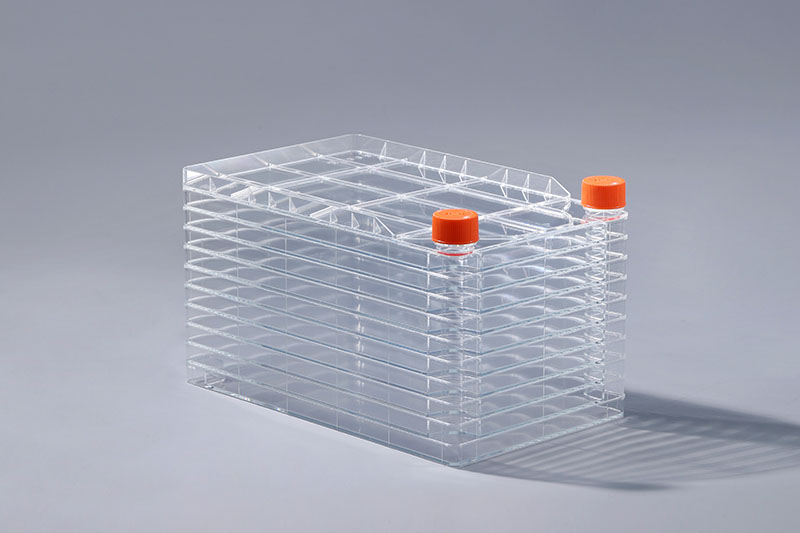عبارة عن ثقافة خلية متعددة الطبقات قابلة للاستهلاك. عند زراعة الخلايا ، غالبًا ما يتم إجراء عمليات تجريبية مختلفة بمساعدة ملحقات مختلفة. أنبوب السيليكون المفلكن البلاتيني هو نوع من خطوط الأنابيب الداعمة المستخدمة بشكل شائع في عملية الاختبار. أنبوب السيليكون المفلكن البلاتيني هو أنبوب سيليكون مفلكن بمحفز البلاتين. تستخدم بشكل أساسي لنقل السائل في مصنع الخلايا. يتميز هذا النوع من خطوط الأنابيب بخصائص مقاومة الرائحة وغير السامة والأحماض والقلويات ومقاومة الأوزون ومقاومة التآكل الكيميائي. تقنية المعالجة الخاصة بها معقدة وتكلفة الإنتاج عالية. يستخدم على نطاق واسع في الغذاء والرعاية الطبية ، وينتمي إلى مستوى الدرجة العالية نسبيًا لأنابيب السيليكون. تتميز بخصائص درجة حرارة الفلكنة المنخفضة وسرعة الفلكنة السريعة. بالمقارنة مع نظام الفلكنة التقليدي للبيروكسيد ، فإنه يتمتع بمزايا حماية البيئة والكفاءة العالية وعديم الرائحة. نظرًا لأن البلدان تولي المزيد والمزيد من الاهتمام لمتطلبات حماية البيئة والصرف الصحي ، وخاصة متطلبات اختبار منتجات السيليكون العضوية المتعلقة بالأغذية البشرية والعلاج الطبي ، فإنها ستحل قريبًا محل عامل الفلكنة التقليدي البيروكسيد. بعد صب البلاتين ، يتمتع المنتج بخصائص فيزيائية ممتازة ، وأبعاد ثابتة ، ومعدل انكماش منخفض ، وقوة شد محسنة للمنتج ، وقوة تمزق ومرونة. مقاومة جيدة لدرجة الحرارة ويمكنها تحمل درجات الحرارة العالية والتعقيم العالي الضغط ، وهو أيضًا سبب مهم وراء اختيار العديد من مؤسسات البحث العلمي وشركات الأدوية لهذا النوع من خطوط الأنابيب. مصنع الخلية
Platinum vulcanized silicone tube is a silicone tube vulcanized with platinum catalyst. It is mainly used for the transfer of liquid in the cell factory. This kind of pipeline has the characteristics of odorless, non-toxic, acid and alkali resistance, ozone resistance and chemical corrosion resistance. Its processing technology is complex and the production cost is high. It is widely used in food and medical care, and belongs to the relatively high-grade level of silicone tubes.
Platinum vulcanization is a two-component addition type vulcanizing agent. It has the characteristics of low vulcanization temperature and fast vulcanization speed. Compared with the traditional peroxide vulcanization system, it has the advantages of environmental protection, high efficiency and odorless. As countries pay more and more attention to the requirements of environmental protection and sanitation, especially the testing requirements for organic silicon products related to human food and medical treatment, it will soon replace the traditional peroxide vulcanizing agent. After platinum vulcanization molding, the product has excellent physical properties, stable dimensions, low shrinkage rate, and greatly improved product tensile strength, tear strength and resilience.
In addition, the platinum vulcanized silicone tube used in the cell factory also has very good temperature resistance and can withstand high temperature and high pressure sterilization, which is also an important reason why many scientific research institutions and pharmaceutical companies choose this kind of pipeline.
The FAI climbed 5.9 percent year-on-year in the first 11 months of 2018, quickening from the 5.7-percent growth in Jan-Oct, the National Bureau of Statistics (NBS) said Friday in an online statement.
The key indicator of investment, dubbed a major growth driver, hit the bottom in August and has since started to rebound steadily.
In the face of emerging economic challenges home and abroad, China has stepped up efforts to stabilize investment, in particular rolling out measures to motivate private investors and channel funds into infrastructure.
Friday's data showed private investment, accounting for more than 60 percent of the total FAI, expanded by a brisk 8.7 percent.
NBS spokesperson Mao Shengyong said funds into weak economic links registered rapid increases as investment in environmental protection and agriculture jumped 42 percent and 12.5 percent respectively, much faster than the average.
In breakdown, investment in high-tech and equipment manufacturing remained vigorous with 16.1-percent and 11.6-percent increases respectively in the first 11 months. Infrastructure investment gained 3.7 percent, staying flat. Investment in property development rose 9.7 percent, also unchanged.
 English
English



















































